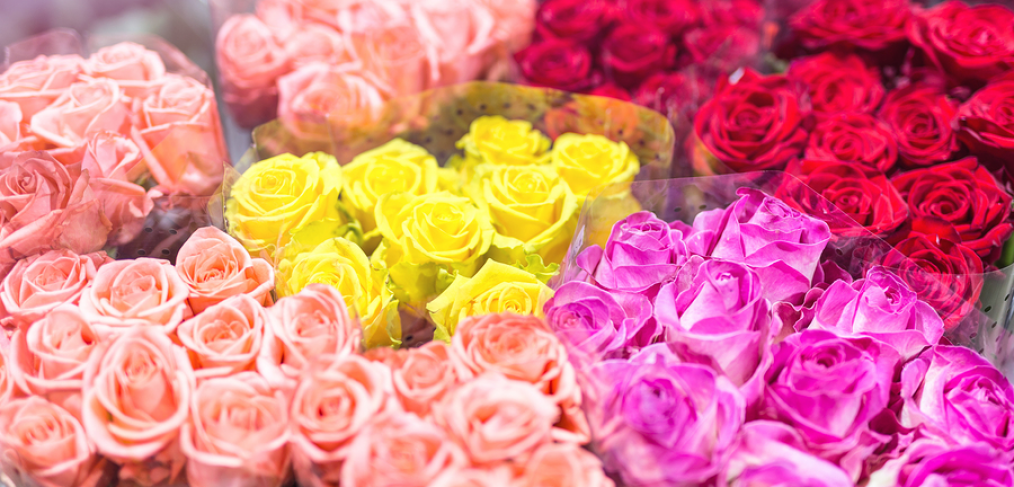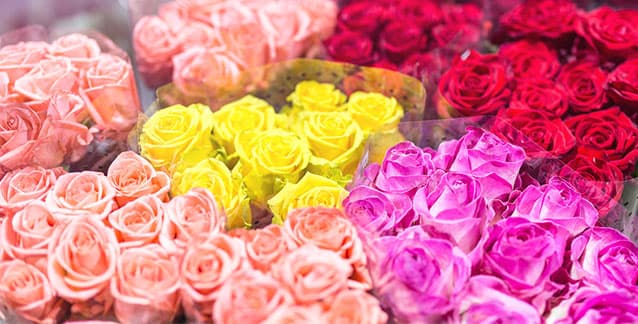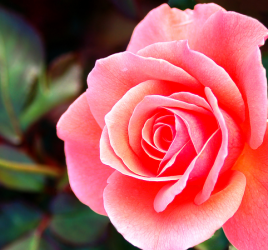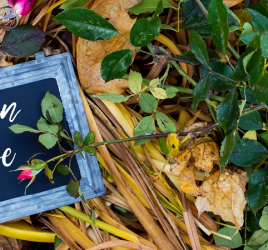
Good and Bad News About the Cut Flowers Industry

Do you have a wife, girlfriend, or sweetheart you have gifted with a big bunch of roses for Valentine’s Day? How about your mother? Do you plan to bring her a bouquet or send a floral arrangement on Mother’s Day?
Are you making plans for your summer wedding, clicking away on pictures of cut flower bouquets, salivating over the hundreds of colors and shapes to be achieved with fresh blooms?
Nothing brings elegance and beauty to an event or special occasion like cut flowers. It’s a go-to pick-me-up that’s handy at the grocery store for those of us suffering from winter blues. A bouquet of fresh flowers on the table can lift your spirits almost instantly.
Have you ever wondered about the ecological impact of those roses you got on Valentine’s Day or the arrangement you will send your mom this May?
Cut Flowers Have to Come From Somewhere
How do those roses get to your hands on February 14th?
For consumers in the U.S. and Europe, it’s as easy as stopping at the nearby convenience store. Red roses seem to be everywhere! Americans spend about $2 billion on Valentine’s Day roses.
The demand is so high, about 15,000 tons of flowers will be shipped in less than a month. However, it doesn’t happen by magic, and if you are picturing big greenhouses in the snow, think (mostly) again.
Most of the world’s cut flowers come from countries with longer growing seasons – South America for the North American market, and Africa for the European market.
There’s one big exception, and that’s the Netherlands. This Northern European country with a non-temperate climate is still the world’s number 1 exporter of fresh flowers. And yes, the industry does require greenhouses, grow lights, and fossil fuel.
About Those Valentine’s Day Flowers
The good news is that not all cut flowers are adding to our environmental impact in the same way, and some of them not very much at all. We will get to the part of the cut flower industry that has a reasonably low impact later.
The flowers that do have a more significant footprint are the ones we almost take for granted, the ones produced for the two big flower holidays every year. You guessed it: Mother’s Day and Valentine’s Day.
One aspect of Valentine’s Day flowers, making them expensive for the planet, is that they are generally roses, and roses are delicate flowers.
They aren’t going to grow in cold climates in the middle of February. They also wilt quickly, and they can’t be shipped slowly. Then, there’s the problem of having all of those roses ready by February 14th (they won’t earn anyone any money after that date), and shipped quickly to the North American and European markets.
It is estimated that these markets take 100 million roses and that to send them on time adds about 9,000 metric tons of carbon dioxide emissions to the atmosphere.
The news about big holiday flowers isn’t great. Vast quantities of Valentine’s Day and Mother’s Day flowers add to greenhouse gases. Some form of pollutant results from the industry every step of the way:
- Chemicals used to grow the flowers.
- 25% more diesel fuel used to refrigerate them on every leg of their journey.
- Cellophane wrappers used to hold supermarket bouquets
If it dismays you, read on for more positives and ways you can buck the trend.
Positives Outweighing the Negatives
Still, it’s not all bad. Eighty percent of those roses are grown in countries like Kenya, Ecuador, and Columbia, where their growth makes a relatively small impact on the surrounding environment and creates thousands of jobs.
Here’s another positive effect your flower is making: it’s keeping countries like Columbia, Ecuador, Bolivia, and Peru in an industry that brings jobs and doesn’t tear apart communities like the drug trade.
In 1991, the U.S. lifted duties on certain imports from these countries. It was called the Andean Trade Preference Act, and it helped pave the way for the cut flower industry to grow there in place of the coca farming that was contributing to the cocaine crisis worldwide. Since the trade agreement, farmers have this sustainable income that isn’t drugs.
Wedding Flowers and Beyond
What about your average, everyday cut flowers or the ones you or your florist would order in small batches for your big day?
The first thing to know is that cut flowers will always be exported from countries like Columbia because they can grow a wide variety year-round.
However, most cut flowers are shipped on passenger planes that are going that way anyway. Your wedding flowers and your average grocery-store bouquet isn’t contributing to the problem in that way.
Also, if you buy flowers marked with the FlorVerde symbol, you can rest assured they have been grown in a sustainable environment and that the workers who produced them have received fair wages and benefits. About 40% of our imported flowers are from FlorVerde certified growers.
But what about local markets? The cheapest, most environmentally friendly flower will be the one you buy in its growing season from a local grower. It’s becoming easier to find these boutique florists in North America.
One place to start is at Slow Flowers. It’s a directory of growers committed to green practices in the United States and Canada. There, for instance, you can find beautiful alternatives to Valentine’s Day roses if you like.
Grow Your Own Cut Flowers
The other obvious answer is to grow your flowers! Check out our handy guide to growing flowers for fresh floral arrangements.
If you have a sunny patch of yard, why not try your hand at flower gardening? You don’t have to skip right to delicate roses. There are many hardy, local blooms that will do well both outside and inside. You never know, that fresh flower hobby might turn into a side business!
Takeaway
Fresh cut flowers are one of the best ways to bring joy to any day or person. Check out these ways to make your next fresh flower purchase better for the earth and for the workers who produce it. And, above all, enjoy yourself!



